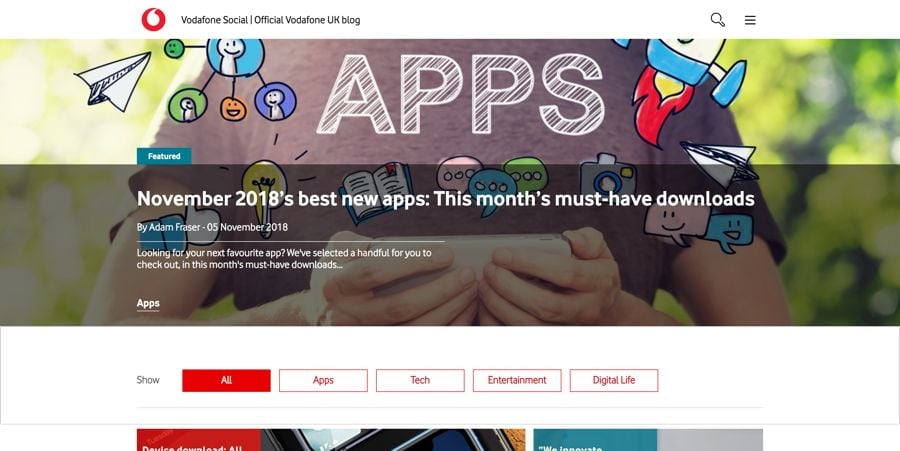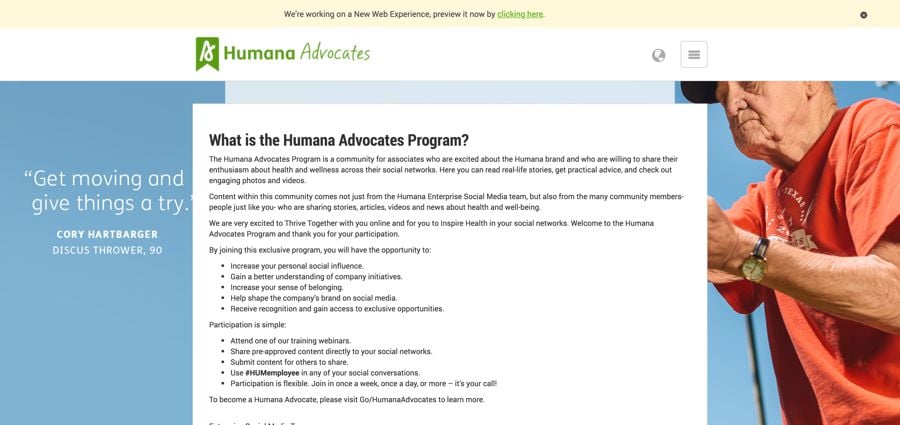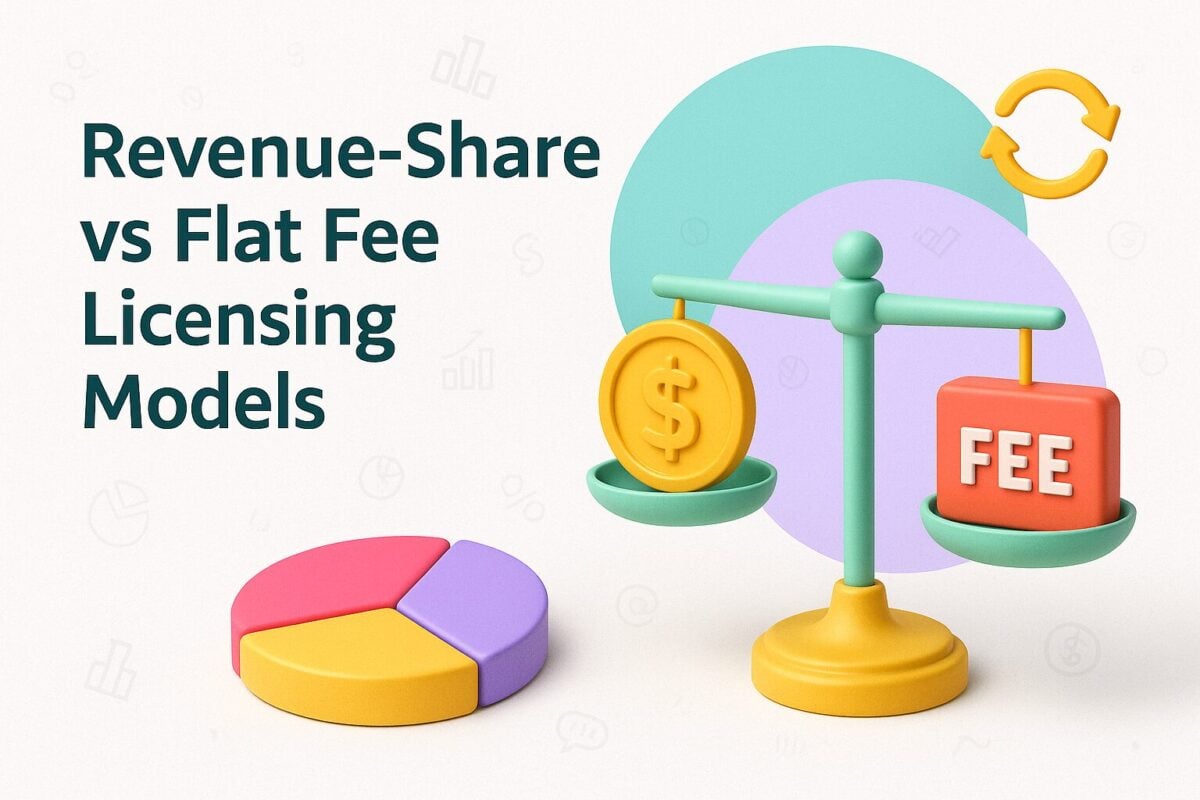The essence of influencer marketing involves brands cooperating with people who have authority on social media and blogs to spread positive messages about the company. In many cases, the most knowledgeable people about a brand and the industry in which it operates, however, are the company’s own employees. The concept of employee advocacy recognizes this – the best people to advocate on behalf of an organization are its employees.
There are many examples of outstanding employee advocacy. If employees are happy and succeeding in their work, there is no reason why they won’t want to sing the praises of their employer.
This is the case for both small and large organizations. Satisfied employees are happy to regale people about the positive aspects of their work. They will “go into bat” on behalf of their firm. This is just as true for organizations as large as MasterCard and Boeing as it is for small-town businesses with a couple of happy employees. The main advantage large corporations have is that they are more likely to have employees with large social followings who are recognized for expertise in their industry.
We have previously looked in detail at what employee advocacy is, and how marketers can use it. We have also discovered ten employee advocacy programs firms can use to increase their brand reach. Here are eight employee advocacy examples – businesses who have already found the power of employee advocacy to spread their message and improve their bottom line.
8 Employee Advocacy Examples:
1. MasterCard
MasterCard works with its employees in the MasterCard Employee Ambassador Program to share brand-related news and other content across their personal social networking accounts.
The company collaborates with 400 of its employees to post text, images, and videos to their Facebook, Twitter, and LinkedIn accounts.
The MasterCard Employee Ambassador Program is a direct result of a commitment to prioritize talent development. In late 2017, Raja Rajamannar, Chief Marketing & Communications Officer and President, Healthcare Business, MasterCard, wrote on LinkedIn, “As we look at our priorities for 2018, let’s commit to putting talent development at the top. There’s much we can do to help develop the ‘superhuman’ marketers needed to succeed in today’s tech-savvy world.”
MasterCard recognizes the benefits it receives from its employees’ outreach. It even allows its staff to post to their social accounts during office hours, in work time, rather than their own.
However, this is merely the latest phase in MasterCard’s wish to use their employees to advocate on their behalf. As far back as 2013, MasterCard was touting the benefits of employee advocacy. It already had lofty goals having its 7,500 employees company-wide comfortable with social media and acting as social media brand advocates.
MasterCard recognizes that one of their strongest social media assets is its vast workforce.
As part of this process, MasterCard developed updated social media playbooks on Twitter, Facebook, Instagram, Pinterest, YouTube, and LinkedIn for its employees. However, it didn’t want its employees to be scared that they would accidentally break protocol. Therefore, MasterCard included its employees in the decision-making process. Marcy Cohen, VP, and Senior Business Leader for Worldwide Communications at MasterCard brought the company together for a meeting for an open discussion about the guidelines, allowing people to ask questions and understand what was and was not allowed on social when acting as an employee advocate for MasterCard. The company videoed this meeting and then made it available to its other employees around the world.
2. Starbucks
Starbucks has built a centralized version of employee advocacy. It has created employee partner accounts on various social networks enabling employees to make posts – pictures, stories, and discussions – about Starbucks. The Starbucks employees’ Facebook page enjoys more than 370,000 followers, their Twitter account has 42,900 followers, and their Instagram page 185,000 followers.
The term “partner” is Starbuck’s official name they give those employees who promote the company socially. It helps the employees’ sense of belonging, but it also emphasizes their accountability for the content they post on the company’s behalf.
Starbucks doesn’t just leave the employees wondering what to do, however. It issues detailed guidelines to its employees regarding what they should do (and perhaps, more importantly, avoid doing) when posting on behalf of the company. According to the guidelines, “We’re called partners because this isn’t just a job, it’s our passion. So, go ahead and share it!”
Starbucks believes in giving its employees better opportunities, to ensure they have a better-trained and more knowledgeable workforce, which leads to lower staff turnover, and ultimately more motivated employee advocates. It claims that staff turnover is just 20% of the industry average.
According to Starbucks CEO, Howard Shultzs, in his book, Onward, “[Employees] are the true ambassadors of our brand, the real merchants of romance, and as such the primary catalysts for delighting customers. [Employees] elevate the experience for each customer – something you can hardly accomplish with a billboard or a 30-second spot.”
3. Reebok
Reebok encourages its employees to share photos of themselves on their social feeds wearing Reebok products, along with the custom hashtag, #FitAssCompany. The staff has taken up the challenge, and it has made for a series of thought-provoking and entertaining posts.
This program allowed the employees to emphasize their passion for fitness, and the irreverent hashtag helps the company keep track of employee content. This has allowed them to learn from experience and evolve the program over time.
Reebok also wanted to encourage its employees to be authentic, to distinguish their posts from a typical paid advertising campaign.
Reebok encourages their employees to target specific topics with their posts, such as weightlifting, running and cycling.
Reebok began by brainstorming ways to channel brand enthusiasm on social channels. It started by recruiting employees who had good social media awareness. It asked them, “How would you like to represent the brand and reach a bigger audience?”
According to Ben Blakesly, Senior Manager of Global Social Media at Reebok, “When you’re passionate about what you do, you want as many people to see as possible. It’s not like pulling teeth to motivate employees to tell their story because they’re already telling it every day.”
Reebok uses two systems to create content for employee advocacy. Firstly it creates articles and blog posts which it shares with employees through the SocialChorus employee advocacy app. Secondly, employees submit their own content which when approved becomes available for both Reebok’s’ own social channels, and its employees’, to use.
4. Vodafone

Recognizing that it was a business with expertise in communications, Vodafone UK decided to work with its employees to help communicate the brand’s messages. It established a Social Comms Team that is responsible for managing its employee advocacy program, Go Social. The team is also responsible for Vodafone Social, the company’s official consumer-facing blog.
The Social Comms Team initially surveyed Vodafone employees about Vodafone UK’s social media policy and discovered that many employees did not know it existed and the majority of people they interviewed weren’t sure what they could and couldn’t share through their personal social media profiles. The survey showed that many employees were willing to share Vodafone-related material if it was easy to do.
Because of this, the team collaborated with Dynamic Signal to introduce Go Social.
This gave them the opportunity to activate willing advocates within the business, as well as make it explicitly clear what work-related material Vodafone UK employees can and can’t share on social.
Go Social makes available a wide range of material for the Vodafone employees to share – from the consumer blog, Vodafone’s enterprise blog, and Vodafone news stories from across the Web. Employees are also able to submit their own content into Go Social and, once it’s approved, it becomes available for everyone else to share.
5. Humana

Health insurance provider Humana has 2,900 employees participating in its employee advocacy program. Human gives its employees and “expert voice” on how they should handle Facebook and Twitter posts.
The employees share a mixture of Humana-branded content as well as general health and wellbeing material, in a 60:40 ratio. One of the main purposes for sharing the health and well-being content is that it helps the employees demonstrate subject authority and become knowledgeable influencers.
Humana chose to work with Dynamic Signal to put an employee advocacy program into place. It began using a small sample of socially active employees in 2015. As a result, it was able to learn from the employees’ experiences during a more modest scale “Phase One” period.
To be a Humana Advocate, associates must first attend a 1-hour training session.
Humana does have to be more careful with its employee advocacy than some other firms because it operates in the health insurance sector, which has strict regulations about the types of statements permitted.
6. Dell

Dell calls participants in its employee advocacy program, Dell Champions. They drive the social culture at Dell and give customers an inside view of Dell.
Dell recognizes the benefits of having brand and social champions around the world who help to spread the Dell passion, both internally with colleagues and externally with customers.
The company offers brand and social media certifications for all employees to become subject matter experts. Once employees complete their training, participants can officially become part of the Dell Champions network, along with more than 1,200 other employees across 84 countries.
The Dell Champions use the EveryoneSocial amplification tool to create and share content.
7. Bluewolf
International IT consulting firm, Bluewolf, understands the value of employee advocacy. According to Corinne Sklar, Global CMO of Bluewolf, “Engagement is conversation; advocacy is conviction.”
They launched an employee advocacy program back in 2012 - #GoingSocial. This encouraged Bluewolf employees to build their personal social brand. Bluewolf believes that for shared content to “feel” more authentic, it should come from a channel with an individual personality.
The #GoingSocial campaign gave employees access to tools and video tutorials that helped them establish an active online presence. It provided employees with a portal for the tools and video guidance they needed to launch their own personal brand.
8. Adobe
Cory Edwards, Head of Adobe’s Social Business Center of Excellence, was shocked to discover the social impact of some of Adobe’s employees on social media. He noticed that a particular employee’s efforts on social media drove more revenue for the company than its branded social networking properties, like @Adobe on Twitter.
This insight led Cory to launch Adobe’s Social Shift Program. This educates company employees on the company’s social media guidelines, shares best practices for their social sharing and helps them to become brand ambassadors.
More than 30% of Adobes employees have undertaken training globally.
Once employees go through the Social Shift program, Natalie Kessler, Head of Employment Branding at Adobe, makes sure they are given opportunities to become brand champions. She encourages employee blogging on Adobe Life. The blog aims to
Adobe also inspires and celebrates social sharing. They frequently hold contests that create a high level of social engagement. Each week, the employee communications team searches the Internet for photos and messages with employees using #AdobeLife and highlights some of the best on Adobe’s digital signage in every office.
In September 2014, the Corporate Reputation team assembled 21 employees from seven different locations to begin Adobe’s brand ambassador program. The brand ambassadors are pre-briefed on Adobe announcements before they become public and given a chance to be the first to share.
Employees are also encouraged to publish on LinkedIn and put reviews on Glassdoor.



